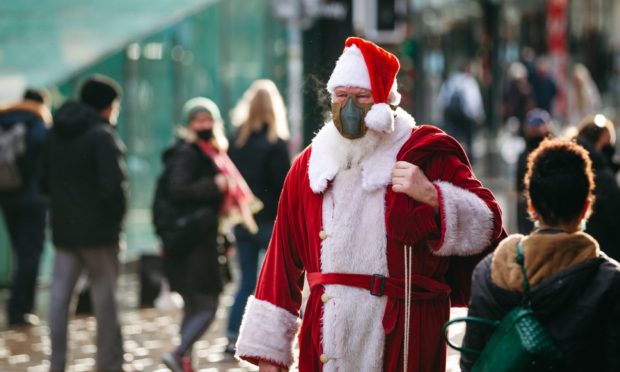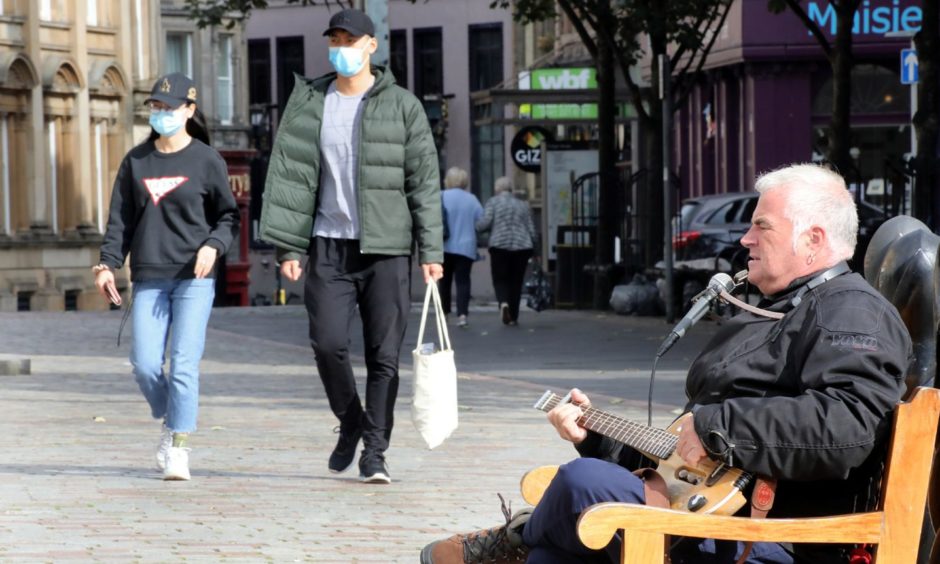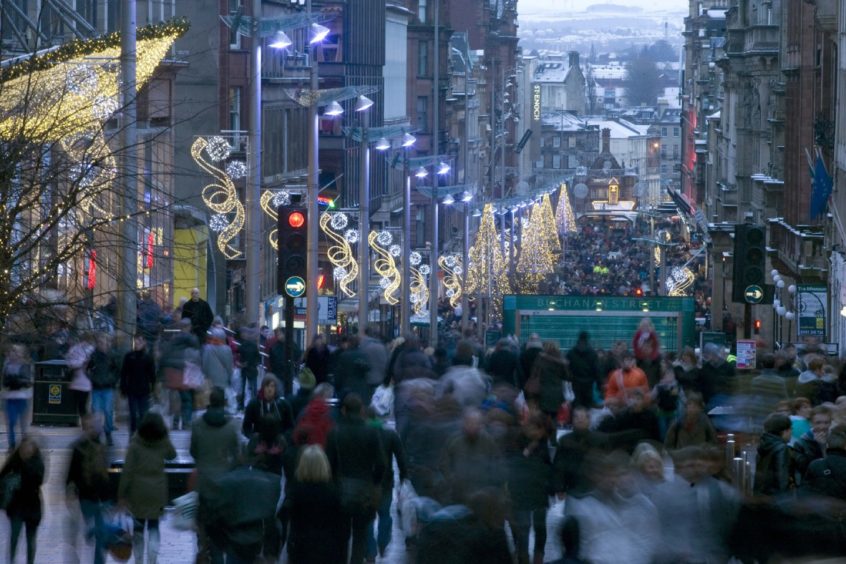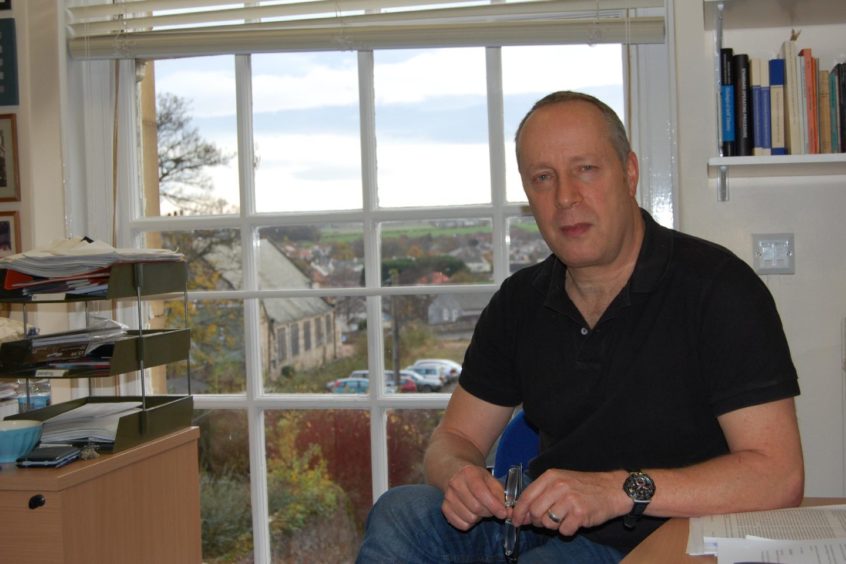Several areas of Scotland face a more than 90% chance of being a coronavirus “hotspot” on Christmas day, according to researchers.
An online calculator created by Imperial College London predicts which Scottish local authority areas have the greatest probability of cases rising above 100 per 100,000 people on December 25.
According to the tool, Clackmannanshire has the highest risk of being a Covid-19 hotspot over Christmas, at 94%, but both Fife and North Ayrshire also sit well within the danger zone, both being set at 92%.
Aberdeen has an 82% probability, while neighbouring Aberdeenshire comes in at 36%.
In Tayside Dundee has the highest probability, at 57%, while Perth and Kinross came in at 44% and Angus at 14%.
Some areas, including Orkney, Moray and Shetland and the Highlands, are deemed to have a 0% risk of becoming a hotspot over the festive period, while the Western Isles have been given a 1% chance.
Edinburgh and Glasgow, which have been both seen an influx of Christmas shoppers in recent days, have an 80% and 64% chance of being virus hotspots, respectively.
The Imperial College London calculator uses data on daily reported cases, weekly reported deaths and mathematics modelling to report probabilities. It assumes no change in current restrictions in the lead up to Christmas.
Christmas restrictions
It has been reported that meet-ups over the festive season hang in the balance as ministers from across the UK attempt to reach a four-nations agreement on how to handle warnings of a surge of infections in the new year.
Talks were to resume on Wednesday following a lengthy telephone call on Tuesday night, and while it is not anticipated that regulations will be changed drastically, ministers are considering issuing much stricter guidance.
This could include further information on how to keep safe, on limiting travel and keeping ‘bubbles’ – the number of people each individual is allowed to meet – as small as possible over the period of easing.
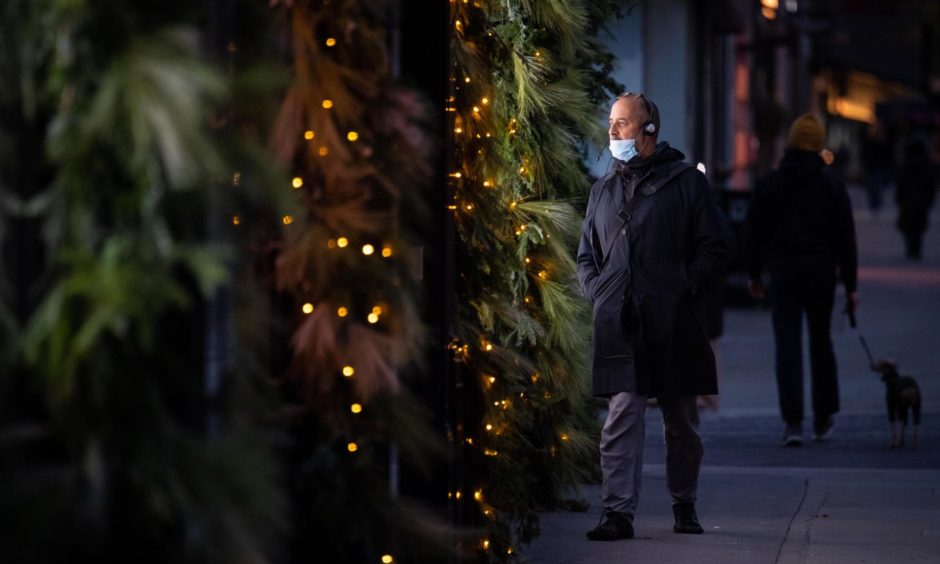
The inter-governmental talks have been held as concerns grow about a new strain of the virus first detected in the south of England. Nine cases of the new strain have now been identified in the Greater Glasgow and Clyde health board area.
Concerns about Christmas triggering an acceleration of the virus were also raised by two leading medical journals. The Health Service Journal and the British Medical Journal warned people might see it “as permission to drop their guard”.
‘Great big risk’
Meanwhile, public health officials warned Scotland must learn lessons for Christmas following a surge in coronavirus cases and deaths in the United States linked to family celebrations over Thanksgiving.
-
The chances of your area being a coronavirus Christmas hotspot, according to the calculator:
- Aberdeen City – 82%
- Aberdeenshire – 36%
- Angus – 14%
- Argyll and Bute – 18%
- Clackmannanshire – 94%
- Na h-Eileanan an lar – 1%
- Dumfries and Galloway – 0%
- Dundee City – 57%
- East Ayrshire – 84%
- East Dunbartonshire – 14%
- East Lothian – 78%
- East Renfrewshire – 50%
- Edinburgh City – 80%
- Falkirk – 42%
- Fife – 92%
- Glasgow City – 64%
- Highland – 0%
- Inverclyde – 10%
- Midlothian – 73%
- Moray – 0%
- North Ayrshire – 92%
- North Lanarkshire – 45%
- Orkney – 0%
- Perth and Kinross – 44%
- Renfrewshire – 37%
- Scottish Borders – 26%
- Shetland Islands – 0%
- South Ayrshire – 34%
- South Lanarkshire – 40%
- Stirling – 16%
- West Dunbartonshire – 9%
- West Lothian – 35%
An expected sharp rise in new infections appears to have arrived in the US just two weeks after families came together for the holiday, with official figures topping out at more than 200,000 new cases and 3,000 deaths per day.
The number of new cases is up 30% from a fortnight ago, deaths have surged by more than two thirds and hospitalisations have increased by 19%. The Centers for Disease Control and Prevention (CDC) is projecting at least 332,000 deaths by January 2.
Stephen Reicher, professor of social psychology at St Andrews University and an adviser to both the UK and Scottish governments, warned that data from Thanksgiving show there is a “great big risk” at Christmas.
“It certainly looks as if there is a steeper increase in infections coming about two weeks after Thanksgiving, both in Canada and the USA,” he said. “And so it makes that fairly obvious point that the more we mix, the more we’re going to get infections.
“Of course, that’s exacerbated when infection levels are already relatively high – the more you have the virus, the more mixing is a problem.
“I think that what it tells us is fairly common sense, which is that the more we mix, the more trouble we’re going to be in. It’s not just a hypothetical, it seems actually to be happening.”
